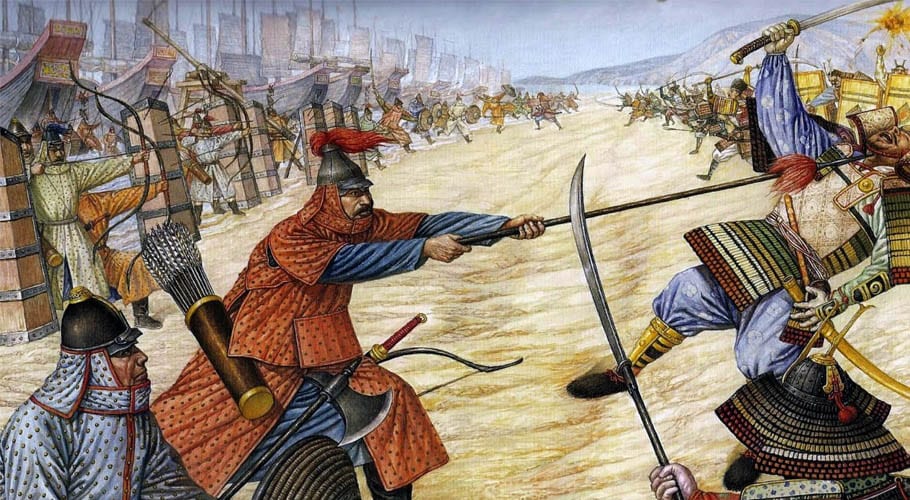Introduction to the Graveyard of Great Empires
Welcome, history enthusiasts and curious minds, to a journey through time and conquests! Today, we plunge into the enigmatic depths of Afghanistan – a land that has witnessed the rise and fall of countless ancient empires. Known as the Graveyard of Great Empires, this rugged terrain holds secrets whispered by centuries past. Join us as we unravel the mysteries behind this historical phenomenon and explore its significance in shaping our world today.
Afghanistan’s turbulent history is woven with tales of mighty civilizations who once held dominion over these lands. From Alexander the Great’s audacious conquest to Genghis Khan’s relentless expansion, Afghanistan has been a coveted prize for ambitious rulers throughout time. Yet strangely enough, it seems no empire can maintain its hold on this treacherous territory for long.
So why does Afghanistan serve as such an unforgiving graveyard for these great powers? What forces conspire against their longevity? Let us delve deeper into this intriguing puzzle and seek answers amidst the echoes of forgotten battles and vanished legacies.
The Rise and Fall of Ancient Empires
The Rise and Fall of Ancient Empires
Ancient empires once rose to great heights, their power and influence stretching across vast territories. They were the epitome of strength, wealth, and cultural advancement. But as history has shown us time and time again, even the mightiest empires eventually crumbled.
These ancient societies achieved greatness through military conquests, innovative technologies, and sophisticated governance structures. The Egyptians built awe-inspiring pyramids; the Greeks established democratic principles; the Romans constructed magnificent infrastructure. They left lasting legacies that continue to inspire us today.
However, despite their grandeur, no empire could evade its inevitable decline. Internal conflicts weakened them from within while external pressures mounted at their borders. Economic strains plagued these empires as resources dwindled or became mismanaged over time.
In some cases, excessive expansion led to overstretching of resources and inability to effectively govern conquered lands. Others faced challenges from rival powers seeking dominance in a relentless struggle for supremacy.
One cannot overlook the role played by geographic factors in shaping destiny – often making it difficult for empires to sustain control over vast territories due to logistical challenges or inclement weather conditions.
And so it goes on – ancient Mesopotamia gave way to Persia which succumbed to Alexander’s ambition before enduring numerous other conquests throughout history – each collapse resulting in new fragments forming amidst remnants of past glory.
It is fascinating yet humbling when contemplating how these once mighty civilizations ultimately met their demise – a reminder that no empire can escape the cyclical nature of rise and fall throughout human history.
Theories on What Led to Their Demise
The theories surrounding the demise of ancient empires are as diverse as the empires themselves. One theory suggests that overexpansion and a lack of effective governance played a significant role in their downfall. As these empires expanded their territories, they struggled to maintain control and administer their vast holdings.
Another theory proposes that internal conflicts and power struggles weakened these great civilizations from within. In some cases, rival factions vied for control, leading to political instability and infighting. This internal strife sapped the strength and unity of these once-mighty empires.
Environmental factors also cannot be discounted when considering the fall of ancient civilizations. Droughts, famines, and natural disasters could have devastated agricultural production, causing widespread hunger and societal collapse.
Additionally, external pressures such as invasions by nomadic tribes or neighbouring powers may have contributed to their demise. The constant threat of invasion forced these empires to divert resources away from development and towards defense.
Furthermore, economic mismanagement may have been another contributing factor. As taxes increased and inequality grew among the population, discontent simmered beneath the surface until it eventually erupted into rebellion or revolution.
While no single theory can fully explain why these great empires fell, it is likely a combination of multiple factors that led to their ultimate demise. Understanding this complex interplay between various elements can provide valuable insights into our own modern-day challenges.
Historical Evidence and Archeological Findings
Historical Evidence and Archaeological Findings
Delving into the rich history of Afghanistan, we discover a treasure trove of archaeological findings that shed light on the enigmatic graveyard of great empires. Excavations in various regions have unearthed remnants from ancient civilizations, providing invaluable insight into their rise and fall.
In the Bamiyan Valley, for instance, the towering statues of Buddha once stood proudly before being obliterated by Taliban forces. These colossal structures were not only symbols of religious devotion but also testaments to the vibrant cultural tapestry that existed centuries ago.
The city of Herat boasts its own archaeological wonders, including intricate mosaic tiles adorning ancient palaces. These beautifully crafted pieces offer glimpses into the artistic prowess and sophistication of past empires.
Moreover, excavations at sites like Ai Khanoum reveal evidence of Hellenistic influence in this region during Alexander’s conquests. Greek-style architecture and artifacts point to a fascinating fusion between Eastern and Western cultures.
But it is not just grand monuments or artworks that provide historical clues; everyday objects such as pottery shards can be equally informative. The shapes, patterns, and materials used in ancient ceramics tell stories about trade routes, technological advancements, and social practices prevalent at different times.
While these discoveries enrich our understanding of Afghanistan’s past glory days under various empires – from Achaemenids to Kushans – they also highlight how time can erode even mighty civilizations. It serves as a reminder that no empire is impervious to decline or collapse.
As archaeologists continue their painstaking work across Afghanistan’s vast expanse, each excavation unearths fragments from forgotten eras waiting to be pieced together like an intricate puzzle. With every artifact discovered comes another thread woven into the complex tapestry that tells the story of this remarkable land – a land known as “the graveyard of great empires.”
Lessons Learned from the Graveyard of Great Empires
Lessons Learned from the Graveyard of Great Empires
As we delve into the historical enigma that is the Graveyard of Great Empires, Afghanistan, we are confronted with a tapestry woven by countless civilizations and empires. Each one rose to great heights before ultimately succumbing to their demise. What lessons can we glean from this tumultuous history?
It becomes apparent that no empire is invincible. The annals of Afghan history illustrate the vulnerability even mighty powers face when trying to exert control over this land. From Alexander the Great’s failed conquest to the British Empire’s struggles in maintaining dominance, Afghanistan has proven time and again that it resists outside forces.
Attempting to impose foreign ideologies without understanding local dynamics leads to unrest and resistance. Throughout its past, Afghanistan has been a melting pot of cultures and traditions. Any empire seeking long-term success must respect these intricacies rather than imposing their own beliefs.
Furthermore, diplomacy should be prioritized over military might when dealing with complex societies like Afghanistan. It is evident that brute force alone cannot quell insurgencies or ensure lasting stability. Instead, fostering alliances and engaging in dialogue can pave the way for more sustainable solutions.
Moreover, economic development plays a crucial role in preventing societal fragmentation. Neglecting infrastructure projects or failing to address poverty only serves as fertile ground for discontentment and rebellion within any given region.
Recognizing regional complexities is vital for international interventions in countries like Afghanistan. No single approach can fit all situations; each context requires nuanced strategies tailored to specific circumstances.
The Graveyard of Great Empires stands as a stark reminder that empires may rise but will eventually fall if they ignore these valuable lessons learned throughout history.
Modern Day Examples of Empires Facing Similar Fates
Modern Day Examples of Empires Facing Similar Fates
In the annals of history, Afghanistan has garnered a reputation as the graveyard of great empires. However, it is not the only place where powerful nations have met their downfall. Across the globe, there are modern-day examples that echo this historical trend.
One such example can be seen in Iraq. After toppling Saddam Hussein’s regime in 2003, Western powers found themselves embroiled in a lengthy and costly occupation. Despite initial hopes for stability and democracy, Iraq descended into chaos and sectarian violence. The once-mighty empire crumbled under internal divisions and external pressures.
Another striking case is Syria. Once considered a regional powerhouse under President Bashar al-Assad’s iron grip, Syria now finds itself torn apart by civil war since 2011. Foreign interventions, extremist groups, and interethnic conflicts have contributed to its rapid decline.
Moving eastward to Africa, we find Libya facing a similar fate. Following the ousting of Muammar Gaddafi in 2011 with international support, Libya plunged into anarchy and fragmentation. Multiple factions vied for control while terrorist organizations took advantage of the power vacuum.
Even closer to home lies Venezuela – once hailed as an economic powerhouse due to its vast oil reserves but now grappling with hyperinflation, political instability,and mass migration as its economy collapses.
These modern-day examples remind us that no empire or superpower is immune to decline or downfall.
The factors contributing to their demise may vary from region to region, but they often include internal strife, power struggles, and external interference.
In our interconnected world, it becomes crucial for global superpowers like China, the United States, and Russia, to tread carefully when engaging with other nations.
The lessons learned from history should serve as cautionary tales, a reminder that unchecked ambitions can lead even mighty empires down a treacherous path.








Your post is a treasure trove of information. It’s evident you’ve put a lot of research into it.
Invitation for Guest Posting Opportunity
I hope this email finds you well.
I am reaching out to extend an invitation for a guest posting opportunity on our blog. We greatly admire the expertise and insights you bring to your field, and we believe that your contribution would be immensely valuable to our readers.
We believe that your unique perspective would enrich our content and engage our audience effectively.
Here are some details regarding the guest posting opportunity:
Topic: Please propose one or more topics that align with our blog’s focus. We’re open to suggestions but recommend that the topics provide value and relevance to our audience.
Content Guidelines: Our blog follows certain content guidelines to maintain quality and consistency. Upon your confirmation to proceed, we will share these guidelines to assist you in crafting the article.
Submission Deadline: We aim to maintain a consistent publishing schedule, so we kindly request that the article be submitted by [insert deadline]. However, if you require more time, please let us know, and we can discuss alternative arrangements.
Author Bio and Promotion: You will have the opportunity to include a brief author bio at the end of the article, where you can introduce yourself and provide links to your website or social media profiles.
Review and Feedback: Once you submit the article, our team will review it and provide feedback if necessary. We value collaboration and aim to ensure that the final piece meets both our standards and your expectations.
If you are interested in this opportunity or have any questions, please feel free to reach out to me directly. Your participation would be an honor for us, and we look forward to the possibility of featuring your insights on our platform.
Thank you for considering this invitation. We appreciate your time and expertise.
Warm regards,
Eligasnoah: